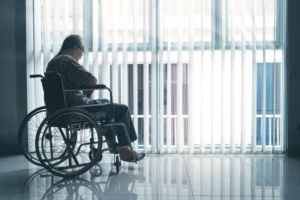
Available in Audio Format:
Feb 12, 2025
Provincial responsibility and opportunity for euthanasia safeguards
In 2016, Canada’s federal parliament legalized medical assistance in dying (MAiD), more commonly known as euthanasia and assisted suicide. Since that time, the federal government has continued to expand euthanasia access. As of 2021, eligibility for euthanasia extends beyond those who are dying to include those with a disability or chronic illness. There is also a scheduled expansion in 2027 to those whose only medical condition is a mental illness, and ongoing talk about allowing advance directives and euthanasia for minors.
Clearly, the federal government has taken the road of suicide assistance, leaving vulnerable Canadians at risk. However, there is opportunity for provincial governments to take a stand and to ensure the protection of their citizens. While Criminal Code eligibility criteria for euthanasia is the responsibility of the federal government, provincial governments oversee the regulation and delivery of healthcare. Provincial law cannot redefine what is criminal, but it can put in place various standards, procedures, or safeguards to protect the health of patients. Provinces can, in this way, improve the way euthanasia is delivered.
In light of this, we have five recommendations for provinces looking to implement better safeguards around euthanasia in their jurisdiction.
- Prohibit health care workers from initiating a conversation about euthanasia.
There are a growing number of stories from patients who felt pressured by their doctor to consider euthanasia. Recently, a woman in Nova Scotia was asked about euthanasia as she was on her way into surgery for cancer. The Criminal Code prohibits counselling a person to commit suicide, but there is no prohibition on suggesting euthanasia. If a healthcare provider brings up euthanasia, a patient may feel pressured to consider it, may be led to believe that their suffering will be intolerable, or may feel that their doctor no longer views them as worthy of care. Even if the comment is not intended as a suggestion, it can very easily be interpreted as such by the patient. Doctors should be prohibited from presenting euthanasia as an option to a patient if the patient has not brought it up.
- Ensure that euthanasia is not provided for mental illness, even if the patient also has a physical disability or illness.
Although mental illness alone does not currently meet eligibility requirements for euthanasia, people with mental illness are eligible for euthanasia if they also have a disability or physical illness. Recent reports from the Ontario Coroner’s office highlighted cases where this has been an issue. One patient had multiple diagnosed mental illnesses and had attempted suicide just a year before being euthanized.
Some jurisdictions require counselling if a patient’s request to die may be influenced by mental illness. At least one American state requires that everyone who requests assisted suicide must be referred for counselling to ensure that mental illness is not impacting the request. Canada would do well to follow suit.
- Protect freedom of conscience for medical professionals.
Many medical professionals rightly object to killing their patients. Medical professionals should be able to refuse to participate in euthanasia without professional consequences. This is not simply a benefit for doctors, but also a safeguard for patients. Many patients want a doctor who they know will never participate in euthanasia and who shares their moral values on the topic. This issue is discussed in depth in ARPA Canada’s policy report on conscience in healthcare.
- Better safeguards to help medical professionals consider and address external pressures behind a patient’s request to die.
Socioeconomic and relational factors have been shown to contribute to a patient’s request to die. One woman experienced social isolation, was unable to find adequate housing for her medical needs and suffered from mental illness. These issues greatly contributed to her request for euthanasia, even though the official reason qualifying her for euthanasia was her disease.
There are currently no requirements for family members to be involved in a patient’s decision to have euthanasia. There is no requirement for patients to try other appropriate services or supports before choosing euthanasia. Doctors should ensure that all possible treatments and supports have been tried, and that family members are included in the conversation as much as possible.
- Clarify the difference between Track 1 and Track 2 euthanasia.
Track 1 euthanasia is for those whose death is ‘reasonably foreseeable.’ Track 2 includes additional safeguards and is for those whose death is ‘not reasonably foreseeable.’ But the term ‘reasonably foreseeable’ is unclear and the law gives no timeline on reasonable foreseeability. As a result, patients are being placed on Track 1 even though they ought not to be. With the additional safeguards in Track 2, patients have more time to receive supports and change their mind about wanting to die. Provinces should clarify that ‘reasonably foreseeable’ means a patient’s prognosis for natural death is within less than six months. This clarification would help to ensure that existing safeguards are actually applied.
What Can You Do?
While we hope to see the federal government restrict euthanasia in Canada, we can also encourage our provincial governments to implement safeguards within the current law. The five safeguards recommended above are not exclusive but are examples of important safeguards that ought to be implemented and are within the province’s right to implement. Consider calling or emailing your provincial representative, asking them to implement better safeguards around euthanasia in your province.


